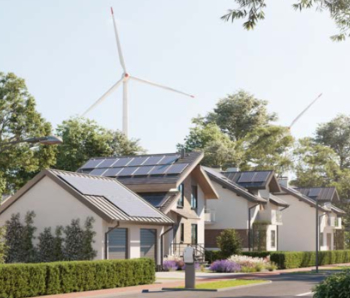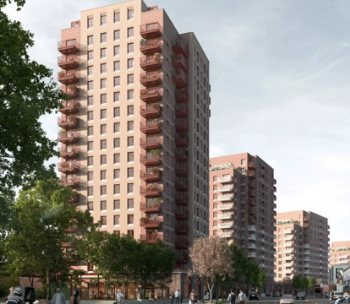A new deal for social housing
In August 2018, the government published a new green paper titled ‘A new deal for social housing’. The aim of the paper is to rebalance the relationship between landlords and residents, and to launch a consultation allowing the submission of views on the future of social housing.
The green paper sets out the following core themes:
- Tackling stigma and celebrating thriving communities;
- Expanding supply and supporting home ownership;
- Effective resolution of complaints;
- Empowering residents and strengthening the regulator, and
- Ensuring homes are safe and decent.
Building on the new borrowing capacity granted to local authorities, the paper sets out plans to ‘explore new flexibilities’ for how authorities can spend revenue from housing that is sold off under Right to Buy. In addition, the paper proposes that the supply of new affordable homes will be boosted by building on partnerships with housing associations and providing funding certainty over a longer period.
The paper also recommends the introduction of new performance indicators and league tables of housing providers to ‘rebalance the landlord/tenant relationship to hold bad practice to account’, in an effort at empowering social housing tenants to take on rogue landlords.
Another pledge is to offer all social housing tenants a ‘springboard’ into ownership, with new shared ownership schemes allowing residents to purchase as little as 1% of their homes each year.
Secretary of State for Communities, Rt Hon James Brokenshire MP, said:
“Providing quality and fair social housing is a priority for this government. Our green paper offers a landmark opportunity for major reform to improve fairness, quality and safety to residents living in social housing across the country.
“Regardless of whether you own your home or rent in the social sector, residents deserve security, dignity and the opportunities to build a better life.”
The green paper drew some criticism from housing campaigners such as Shelter and the Joseph Rowntree Foundation who claimed that the reforms would prove ineffective without providing council housebuilding with substantial new funding.
Shelter’s chief executive, Polly Neate, said the green paper was “full of warm words but doesn’t commit a single extra penny towards building the social homes needed by the 1.2 million people on the waiting list.”
David Orr, chief executive of the National Housing Federation (NHF) said:
“Without significant new investment in the building of more social housing, it is very hard to see how it can be a safety net and springboard for all the people who desperately need it. Our ambition for the Green Paper is that it sets a course for a future where everyone can access a quality home they can afford. To do that, we need to build 90,000 new social rent homes every year.”
Labour’s shadow Housing Secretary, John Healey, called the proposals “pitiful” and said “the number of new social rented homes is at a record low but there is no new money to increase supply and ministers are still preventing local authorities run by all parties from building the council homes their communities need.”
[edit] Feedback
The consultation ran from August 14, 2018 to November 6, 2018. The Ministry of Housing, Communities & Local Government is currently analysing the feedback it has received. Future announcements will be made here.
[edit] Related articles on Designing Buildings Wiki
Featured articles and news
Design and construction industry podcasts
Professional development, practice, the pandemic, platforms and podcasts. Have we missed anything?
C20 Society; Buildings at Risk List 2025
10 more buildings published with updates on the past decade of buildings featured.
Boiler Upgrade Scheme and certifications consultation
Summary of government consultation, closing 11 June 2025.
Deputy editor of AT, Tim Fraser, discusses the newly formed society with its current chair, Chris Halligan MCIAT.
Barratt Lo-E passivhaus standard homes planned enmasse
With an initial 728 Lo-E homes across two sites and many more planned for the future.
Government urged to uphold Warm Homes commitment
ECA and industry bodies write to Government concerning its 13.2 billion Warm Homes manifesto commitment.
From project managers to rising stars, sustainability pioneers and more.
Places of Worship in Britain and Ireland, 1929-1990. Book review.
The emancipation of women in art.
Call for independent National Grenfell oversight mechanism
MHCLG share findings of Building Safety Inquiry in letter to Secretary of State and Minister for Building Safety.
The Architectural Technology Awards
AT Awards now open for this the sixth decade of CIAT.
50th Golden anniversary ECA Edmundson awards
Deadline for submissions Friday 30 May 2025.
The benefits of precast, off-site foundation systems
Top ten benefits of this notable innovation.
Encouraging individuals to take action saving water at home, work, and in their communities.
Takes a community to support mental health and wellbeing
The why of becoming a Mental Health Instructor explained.
Mental health awareness week 13-18 May
The theme is communities, they can provide a sense of belonging, safety, support in hard times, and a sense purpose.
Mental health support on the rise but workers still struggling
CIOB Understanding Mental Health in the Built Environment 2025 shows.
Design and construction material libraries
Material, sample, product or detail libraries a key component of any architectural design practice.

























